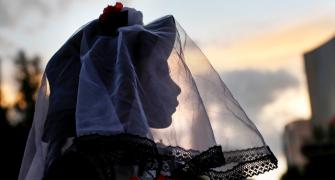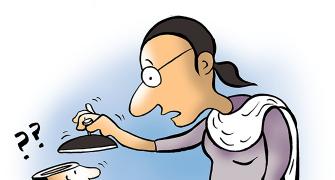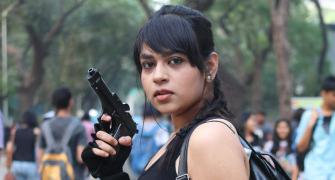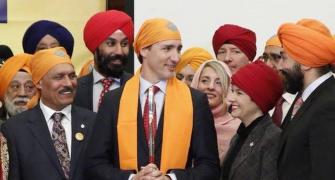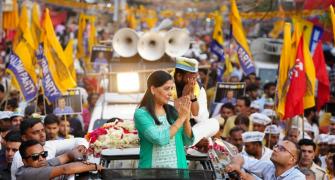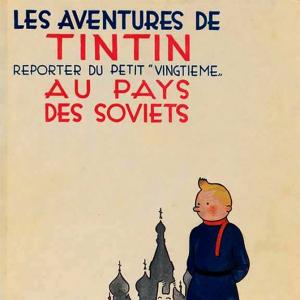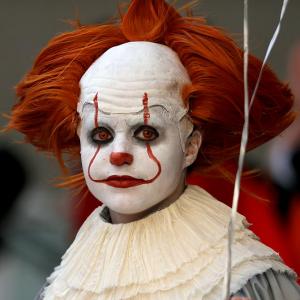As Comic Con India enters into a licensing deal with Archie Comics -- which will involve exclusive India editions of Archie titles and narratives -- Debarghya Sanyal explores the evolution of the Riverdale heartthrobs.
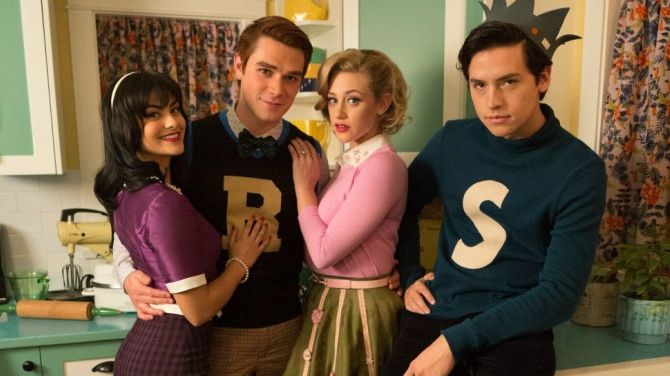
By 2017, the reader's near complete disbelief in the pastel-coloured Dream of the Archie Comics is urgent and palpable enough to receive this darker, ink-stained live-action adaptation of the Archie mythos.
Dedicating an entire year of Comic Cons across four major cities to a single comic book character and mythos might seem strange. Yet, when it comes to Archie Andrews, the heartthrob of Riverdale, there are decades' worth of reasons.
As Comic Con India enters into a licensing deal with Archie Comics, which will involve exclusive India editions of Archie titles and narratives, the 1990s' kid in any of these four cities -- Delhi, Mumbai, Bengaluru and Hyderabad -- will tell you exactly how this has added a special layer of charm to the annual comic-lovers' fest.
One of the most popular foreign titles on the comic book stands for the last two decades of the preceding century, Archie had long been our first definition of 'contraband', our window to teenage romance and pastel-coloured dreams of a 'good-life'.
Above all, Archie was a distinct marker of a typically 90' anxiety -- the anxiety of stepping out into the wider world.
This, however, is not all Archie was.
Created in 1941, by publisher John L Goldwater, writer Vic Bloom and artist Bob Montana, Archie Andrews has always been a character of adaptable tissues.
The character's immense popularity in Australia, India and parts of Japan is indicative of its iconic nature -- a most simplistic template of narratives and characters that can absorb and reflect cultural aspirations and anxieties alike, across time and space.
Archie's friends, his family, the bullies and the jocks, the divas, the geeks -- life in Riverdale has mostly mirrored the highly malleable phantom of the 'American Dream'. And therein lies the paradox.
Many comics scholars and fans alike would point out that Archie's long survival was ensured in the first place by its essential adherence to the Comics Code of the 1950s.
Established in 1954, by the Comics Magazine Association of America, the Comics Code Authority (CCA) formulated this Code to allow the comic publishers to self-regulate the content of their comic books in the United States.
The Code lasted until the early 21st century and had been a response to a series of US Senate hearings and psychiatrist Fredric Wertham's book, Seduction of the Innocent, which alleged that comic books were a major corrupting influence on the American youth.
In fact, with their targeted attack on crime, horror and 'sexy' content, members of the CCA, led by Archie creator Goldwater, made sure that certain comic book titles, like Crime SuspenStories, The Vault of Horror and Tales from the Crypt by EC Comics, would find it difficult to make their way to the newspaper stand.
On the other hand, Goldwater's Archie was carefully edited for sexual innuendos and 'suggestive' plot lines. Therefore, for most of 1950s, '60s and '70s, Archie's status as the 'good comic book' would help it dominate the non-superhero comics segment.
As several comic critics point out, Archie's synonymy with an austere White-dominated middle-class 'American Dream' was in fact carefully cultivated and marketed by the Goldwater influenced CCA itself.

However, when it hit India's newsstand in the mid-1980s, the forever-teen Peter Pan of suburbia would face an entirely new and unmitigated terrain of comic book frenzy.
In many ways, the last decade of the 20th century also marked a pubescent coming-of-age for the Indian nation itself, as we shook off the cobwebs of a Soviet-leaning socio-economic mindset, encountered the demons of communal violence and terrorism, stumbled upon the exploding world of gender categories and sexual preferences, and shook hands with the economic, cultural and political phenomenon that was the rise of 'America'.
For the Indian comic book fan, after three decades of divine superheroes fighting pitched battles for an ancient golden-age India, the focus had suddenly shifted towards a brattish longing for the 'good life', 'fun' and 'adventure'.
For an entire generation of urban educated Indian young men, this would become the visualisation of the American Dream -- good-looking girls, swanky cars, picturesque neighbourhoods and burgers. Therefore, if New York and Chicago were its urban core, Riverdale was the sub-urban periphery rounding off the image of a global metropolis.
The sprawling lawns, tree-lined lanes and neat cottages in the world of Archie Andrews fit right into our first 'image'inations of the Silicon Valley, which by early 2000s would become the destination for Indian science and management graduates.
This is how Tom Sawyer and Huckleberry Finn really grew up. They left Mississippi, and landed in Riverdale, where they did not have to worry about Jims or 'Injun' Joes any more. And the fact that they brought their bright sweaters, guitars and beach-ball to our third-world news stands, we believed, was an invitation enough for us to journey to their 'America'.
However, Archie was hardly ever the 'good comics' in India.
At best, it was always on the fence between two utopias. Archie's choice between Betty and Veronica, in fact, is perhaps the best allegory of the very middle-class anxiety the comic book evoked: a choice between a middle-class domestic stability, and an equally middle-class ambition for an upper-class adventurism and glamour.
And this ready correlatability of its template-like plot was also one of the reasons why several Bollywood directors would go on to register ringing hits adopting the Archie formula of the rich girl, girl-next-door and boy-next-door triangle, complete with Jughead-like comic sidekicks, and Moose-inspired bullies.
Remember Jo Jeeta Wohi Sikandar? Or, Kuch Kuch Hota Hai?
Archie's readership has changed however. And so has Archie, of course.
In the early days of the comic book, the lead characters could be heard on an NBC radio show called Archie Andrews.
By the 1970s they had appeared in a string of popular animated TV serials, led by The Archie Show (1968), Archie's TV Funnies (1971) and The US of Archie (1974), culminating into the immensely popular Archie's Weird Mysteries (1999 to present).
By the early 2000s, Archie was clawing desperately for its old popularity, a task almost impossible in a post-9/11 world. It wasn't difficult to identify the cheeky scepticism of its new reader base in Weird Mysteries where the near-perfect picture of Riverdale was underlined by repeatedly invoking and ultimately allaying the fear of lurking shadows, albeit with a casual playfulness.
By 2017, however, the reader's near complete disbelief in the pastel-coloured Dream is urgent and palpable enough to receive a darker, ink-stained live-action adaptation of the Archie mythos in Riverdale.
This increasingly popular TV series on the CW channel in the US is no longer interested in playfully nodding at hidden monsters. Instead, similar to Ed Brubaker and Sean Phillips' very popular graphic novel, Criminal: The Last of the Innocent, it delves straight in and reveals the darkness behind the suburban utopia -- teenage angst, secrets, deceits, drug abuse, jealousy and murder.
The disillusionment with the Dream does not necessarily translate into a disinterest in Archie. The journey goes on, as it weaves in the pastels with the ink.
The nostalgia remains, as does the ever-present hope to break out of the now self-contained fan bases into a wider, more diverse readership.
Debarghya Sanyal is pursuing a PhD in Comics and Graphic Novels from the University of Oregon, US.



